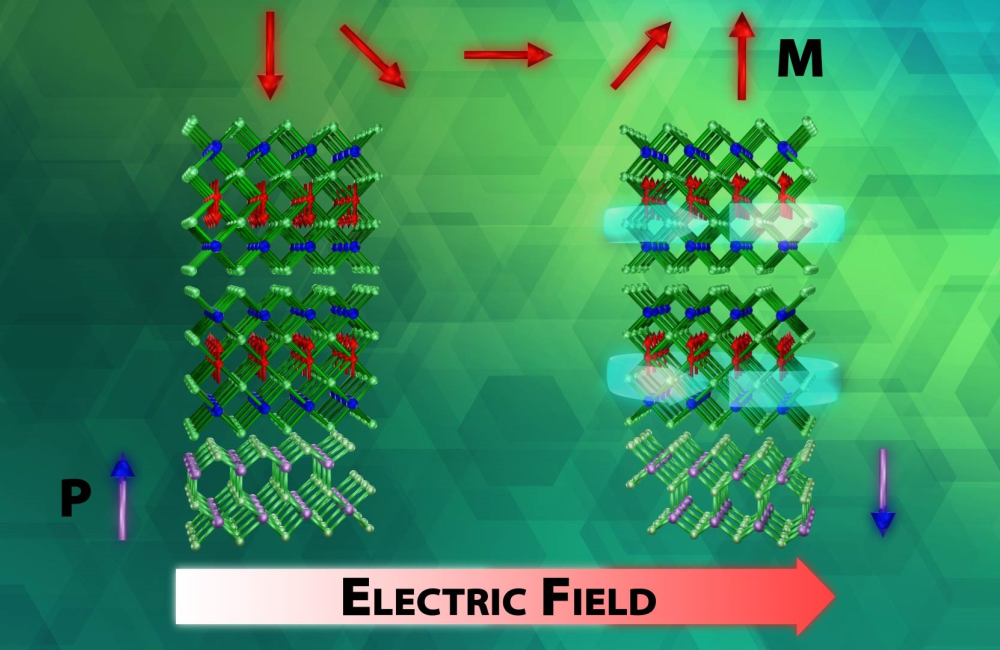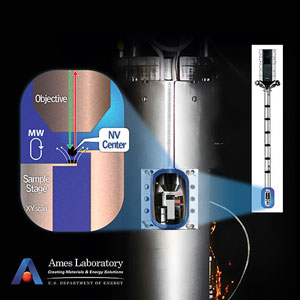
An advance in a topological insulator material — whose interior behaves like an electrical insulator but whose surface behaves like a conductor — could revolutionize the fields of next-generation electronics and quantum computing, according to scientists at Oak Ridge National Laboratory.
Discovered in the 1980s, a topological material is a new phase of material whose discoverers received a Nobel Prize in 2016. Using only an electric field, ORNL researchers have transformed a normal insulator into a magnetic topological insulator. This exotic material allows electricity to flow across its surface and edges with no energy dissipation. The electric field induces a change in the state of matter.
“The research could result in many practical applications, such as next-generation electronics, spintronics and quantum computing,” said ORNL’s Mina Yoon, who led the study.
Such matter could lead to high-speed, low-power electronics that burn less energy and operate faster than current silicon-based electronics.
Here is the abstract:
“In this letter, we propose a mechanism to control the magnetic properties of topological quantum material (TQM) by using magnetoelectric coupling: this mechanism uses a heterostructure of TQM with two-dimensional (2D) ferroelectric material, which can dynamically control the magnetic order by changing the polarization of the ferroelectric material and induce possible topological phase transitions. This concept is demonstrated using the example of the bilayer MnBi2Te4 on ferroelectric In2Se3 or In2Te3, where the polarization direction of the 2D ferroelectrics determines the interfacial band alignment and consequently the direction of the charge transfer. This charge transfer, in turn, enhances the stability of the ferromagnetic state of MnBi2Te4 and leads to a possible topological phase transition between the quantum anomalous Hall (QAH) effect and the zero plateau QAH. Our work provides a route to dynamically alter the magnetic ordering of TQMs and could lead to the discovery of new multifunctional topological heterostructures.”

 , or acceptors,
, or acceptors,  (blue circles). Results obtained both with and without the SOC are shown. (b) Calculated energy differences between antiparallel and parallel alignments between the magnetic moments of a
(blue circles). Results obtained both with and without the SOC are shown. (b) Calculated energy differences between antiparallel and parallel alignments between the magnetic moments of a  defect and its adjacent native Mn atom (MnMn) in both AFM and FM MBT as a function of the free carrier density without considering the SOC. (c) Crystal structure of a MBT SL with a pair of antisite-defects (
defect and its adjacent native Mn atom (MnMn) in both AFM and FM MBT as a function of the free carrier density without considering the SOC. (c) Crystal structure of a MBT SL with a pair of antisite-defects ( and
and  ). Red, blue, and green balls represent Mn, Bi, and Te ions, respectively. Red and blue arrows represent the direction of magnetic moment of Mn.
). Red, blue, and green balls represent Mn, Bi, and Te ions, respectively. Red and blue arrows represent the direction of magnetic moment of Mn.The ORNL scientists published their findings in 2D Materials.



